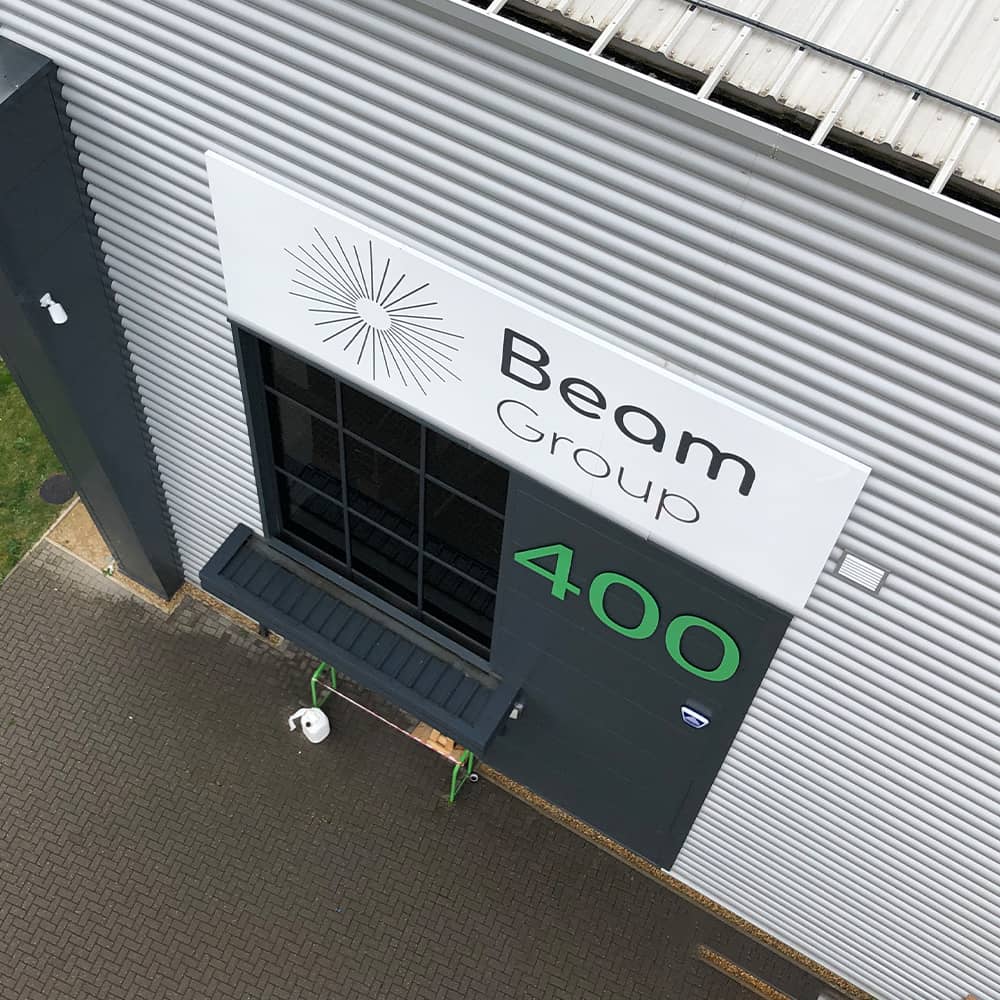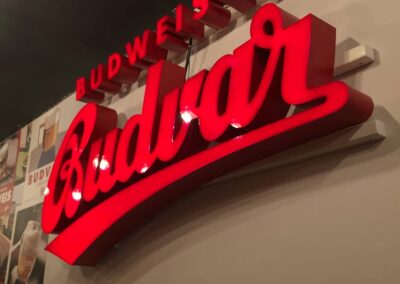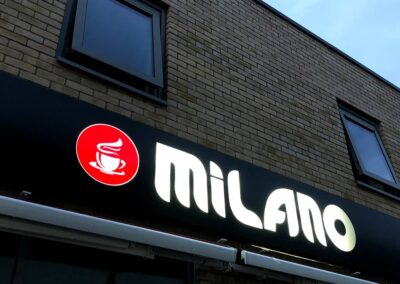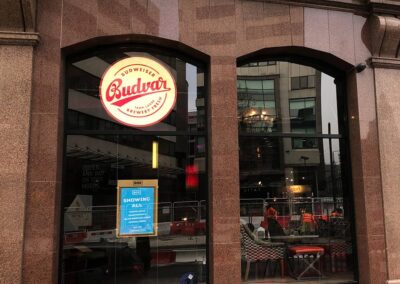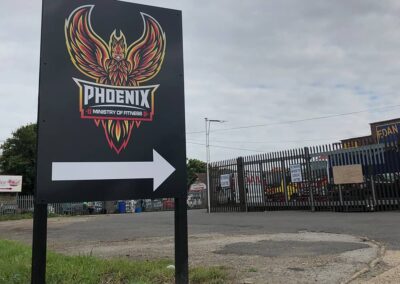let's chat, call us today on 01480 597 444
An insider’s guide: Do I need planning permission for a sign?
Last year we designed and installed over 1,500 signs on warehouses, office buildings and chains of shops across the East of England. The most commonly asked questions we come across from customers when they start to think about new signs are: “Do I need planning permission for a sign?” and “How big can a sign be without planning?”.
What constitutes as a ‘sign’?
First things first! gov.uk states that signs fall under the (extremely) broad category of advertisements which includes:
- posters and notices
- placards and boards
- fascia signs and projecting signs
- pole signs and canopy signs
- captive balloon advertising (excluding balloons in flight)
- flag advertisements
- price markers and price displays for outdoor advertisements and signs
Almost certainly, you are going to need some approval before you can put up your sign. So, before you spend time and money creating beautiful signage for your business, read on to check you have the appropriate permissions first…
Our useful guide covers the 7 key things you need to consider whilst planning your new building signage to ensure you have the correct permissions:
1: Get the Landlord’s permission for your signage
2: Check you don’t need permission from the estate owner
3: What you need to do for sign planning permission in National parks.
4: The types of permissions for signage projects
5: Getting signage approval in a town centre
6: Signage approval near power networks
7: Internal signs planning consent
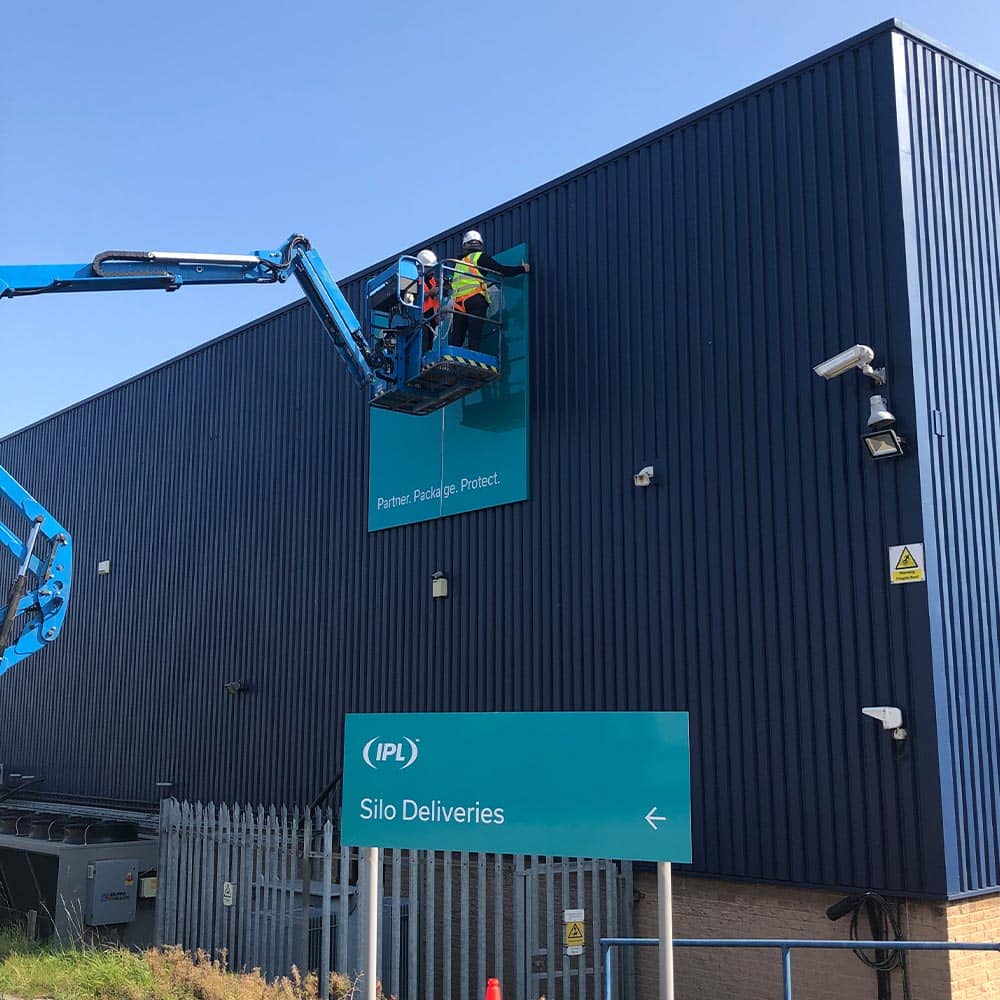
1. Get the landlord’s permission for your building’s signage
If you are currently in a leased office building, you will most likely have some clauses in your lease agreement that relate to what you can and can’t do to the premises. It is worth checking these when planning your new sign, as signage is normally one of the items that is addressed directly. The good news is that landlords know you are going to need a sign for your building, so this will be covered and should be easy enough to navigate.
Attaching a sign to any structure will invariably involve some screws and bolts, this in turn will result in some holes being made in the construction. Some landlords are more precious than others about this, so we would always recommend notifying the landlord. The team at Motive can help you at this point providing you with visuals to share with the landlord, to ensure all parties are happy before the work starts.
2. Check you don’t need permission from the estate owner
Even if you own the warehouse or building or have approval by the landlord to put up your sign, it is not uncommon for the estate on which your premises is located to have other constraints, and these are usually detailed within the deeds for the premises.
Quite often there will be restrictions on the type of structure that you can put inside or on your property boundary – even if you own it – including how big can a sign be. A quick check over the deeds for the premises should be able to highlight any issues and permissions you’ll need whilst planning your new sign and what you may need to avoid for e.g., keeping to within a permitted size limit.
3. What you need to do for sign planning permission in National Parks
Planning controls in National Parks are (quite rightly) more restrictive than they are in other areas of the country. All planning permission in these areas is controlled directly by the particular park authority for the area in which you are located, and our advice is to always seek approval from them before undertaking any signage projects. Visit the umbrella website for more information.
4. The types of permissions for signage projects
Simply put, there are three types of consent for planning for advertising and signs:
- Signs which the rules exclude from the planning authority’s
direct control (these are rare) - Signs for which the rules give a ‘deemed consent’ so that the planning authority’s consent is not needed, provided your sign is within certain rules and guidelines – a large number of sign projects will fall into this criterion
- Signs for which the planning authority’s ‘express consent’ is always needed
The 5 standard conditions of business signage:
All business signs must comply with five ‘standard conditions’, which cover basic safety, general permission whilst not obscuring other signs. In full, they must:
- Be kept clean and tidy
- Be kept in a safe condition (i.e., not in danger of falling off a wall)
- Have the permission of the owner of the site on which they are displayed (this includes the Highway Authority if the sign is to be placed on highway land)
- Not obscure, or hinder the interpretation of, official road, rail, waterway or aircraft signs, or otherwise make hazardous the use of these types of transport
- Be removed carefully where so required by the planning authority
5: Getting signage approval in a town centre
Town centres often present more than one challenge when getting a sign fitted. Many town centres in the UK are ancient and it is not uncommon for large parts of the centre of towns to contain listed buildings. Rules that control what you can and can’t do to listed buildings are extremely strict and this would again need approval before you plan any sign project.
Regardless of the type of building, undertaking and sign-fitting work needs careful management. All the relevant documentation, permits, method statement and risk assessment will need completion before you can undertake your project. As these are public areas, your project will need meticulous planning and the team at Motive graphics can help you think through every step of this.
6: Signage approval near power networks
Often signs on premises will be quite high on the side of a building and it’s not uncommon for the teams to have to work around electrical hazards. As part of our risk assessment and method statement our experienced site survey team are typically looking for these types of issues and can advise you on the best course of action.
Specific permission needs to be granted by the power networks to operate any of its infrastructure, and this can be a lengthy process. A word of warning: costs of isolating transformers and cutting electrical services can very quickly escalate at an eye-watering speed, so where possible, try and avoid these areas if possible.
7: Internal signs planning consent
Internal signs require no formal permission from any external body, and most landlords are not at all worried about what you do in the inside of the premises provided this is put right before you hand back the keys at the end of the lease. So, the sky’s the limit!
This document is a brief guide and gives an overview of some of the key considerations you need to take. We would always recommend that before you undertake any work on a building, that you consult the local planning department for up-to-date advice on the latest changes to planning rules. For the latest government guidelines click here
Do you need more information or advice on changing your office building or warehouse signage?
Please don’t hesitate to contact the motive team if you would like any help or advice
You may also be interested in
> Download your FREE sign fitting guide

what our customers say about us
follow us to see more examples of our projects and satisfied customers
Motive Graphics, 1 Orion Court, Ambuscade Road, Colmworth Business Park, Eaton Socon, St Neots, PE19 8YX
